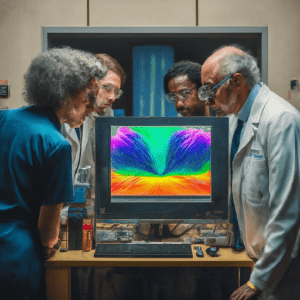Table of Contents
Understanding Quantum Tunneling
It is a fascinating fact that quantum particles can do things that would seem impossible according to the laws of classical physics. One such phenomenon is quantum tunneling, which allows particles to penetrate barriers that should, in theory, be impenetrable. In essence, quantum tunneling refers to the quantum mechanical phenomenon where a subatomic particle passes through a potential barrier.
This concept is not only confined to the microscopic world but also has implications in the macroscopic world. These include nuclear fusion in stars, scanning tunneling microscopes, and even the operation of our DNA. It’s a phenomenon that’s difficult to grasp because it’s so far removed from our everyday experiences.
Quantum tunneling defies our conventional understanding of physics. In classical physics, an object needs a certain amount of energy to overcome a barrier. However, in quantum mechanics, particles can cross barriers even when they apparently don’t have sufficient energy to do so. This can be explained by the wave-particle duality of quantum particles.
Essentially, this means quantum particles exist in a state of probability. Instead of having a definite location, they exist in various states simultaneously until they are observed or measured. Therefore, there’s always a chance that they could be on the other side of the barrier — and that’s exactly what happens in quantum tunneling.
How Quantum Tunneling Works
In quantum mechanics, the wave function describes the state of a system. For a particle approaching a barrier, its wave function can be split into two parts – one reflecting off the barrier and another tunneling through it. Even though classically the second part should be zero beyond the barrier (since the particle lacks necessary energy), quantum mechanics predicts a small but finite probability for it.
This ‘tunneling’ part decays exponentially with distance and the width of the barrier. This implies that a particle can tunnel through a barrier only if it’s not too wide or too high. Hence, the probability of quantum tunneling decreases rapidly as the barrier width increases, but it never becomes zero.
Interestingly, quantum tunneling isn’t an instantaneous process. The time taken for tunneling is a topic of active research. Some studies suggest that tunneling might happen instantaneously, while others assert it takes a finite time. However, this doesn’t contradict the common assertion that nothing can travel faster than light because no real-space trajectory is involved in tunneling.
Therefore, quantum tunneling is fundamentally different from traversing a physical distance. The particle doesn’t ‘travel’ through the barrier; instead, it simultaneously exists on both sides until observed or measured. This makes quantum tunneling one of the most intriguing and counter-intuitive phenomena in physics.
Applications of Quantum Tunneling
Quantum tunneling has significant implications in many areas of science and technology. For instance, in nuclear fusion, the process that powers the Sun and other stars, hydrogen nuclei overcome their mutual electric repulsion and fuse together due to quantum tunneling.
In technology, one of the most crucial applications of quantum tunneling is the Tunnel Junction. It forms the basis of devices like Scanning Tunneling Microscopes (STM), which can image surfaces at the atomic level by detecting the tunneling current between a conducting tip and the surface.
Moreover, Quantum tunneling also plays a key role in modern electronics in devices like Tunnel Diodes and Field-Effect Transistors. These devices utilize the ability of electrons to tunnel through potential barriers to control electrical conductivity.
In biology, there are growing indications that enzymes use quantum tunneling to speed up biochemical reactions. More specifically, research has suggested that protons, electrons, or even entire atoms could tunnel between different positions within a molecule. Therefore, the quantum tunneling phenomenon is not just limited to physics but has wider implications across multiple fields.
